
Roots
The essence of human identity finds grounding in the tangible; for people of African descent, the coiled spirals and bold textures sprouting from the scalp hold a library of shared memory, a living testament to journeys through time. Before the brutal ruptures of the transatlantic passage, textured hair stood as a profound marker, signaling lineage, social standing, age, and spiritual conviction. Its care was a communal practice, often the tender work of revered hands, solidifying familial and tribal bonds. This heritage, so deeply rooted, faced a violent redefinition during the era of forced migration and enslavement.
The captors, in their calculated cruelty, sought to sever these visible ties to ancestral ways, often shaving heads upon arrival in the ‘New World’ – an act intended to strip identity, to render the individual anonymous within the machinery of chattel slavery. Yet, beneath the imposed uniformity, or in the very act of its re-creation, textured hair continued to whisper secrets, to hold messages unseen by the oppressor, understood implicitly by those who carried its legacy.
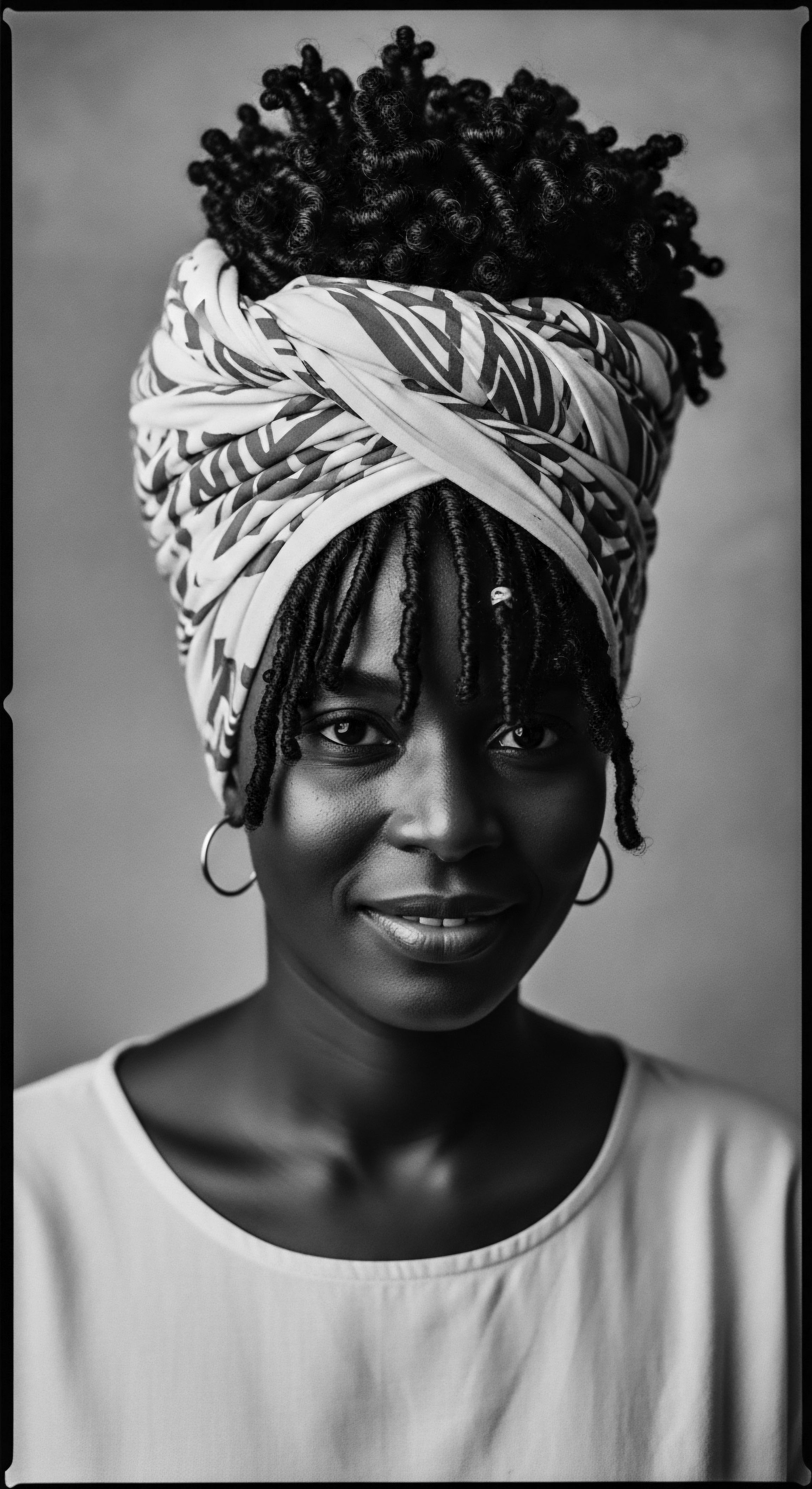
The Anatomy of Heritage and Resilience
At a fundamental level, textured hair possesses a distinct anatomical blueprint. Unlike straight or wavy hair, each strand of highly coily hair emerges from an elliptical follicle, not a round one. This unique shape causes the hair shaft itself to twist and spiral as it grows, creating the signature curls, coils, and kinks that define its structure. The tight curl pattern means more points of contact between individual strands, making it appear denser, yet also more susceptible to dryness and breakage if not cared for with understanding.
From an ancestral perspective, this structure was not a defect, but a design. It offered inherent protection from the sun, served as a natural cushion against impact, and provided a canvas for intricate styles that communicated social standing or spiritual alignment. Modern science now validates these inherent qualities, revealing the biophysical advantages of a hair type once deemed “inferior” by Eurocentric standards. The very biology of this hair is a story of adaptation and enduring strength.
Textured hair, with its unique follicular structure, served as a living canvas for ancestral stories and a testament to enduring strength.
The scientific understanding of Hair Anatomy provides a lens through which to appreciate the ancestral ingenuity applied to its care. The cuticle, the outermost layer of the hair shaft, is a protective shield. In textured hair, these cuticle scales tend to be raised more often due to the bends and curves of the strand, contributing to its natural luster and requiring specific moisture retention practices. The cortex, the inner bulk of the hair, provides strength and elasticity.
Its protein bonds, particularly disulfide bonds, determine the curl pattern. Knowing this, ancestral practices like oiling and conditioning with natural substances can be seen not as mere rituals, but as scientifically sound approaches to maintaining cuticle integrity and cortex health, preserving the hair’s inherent qualities for function and cultural expression.
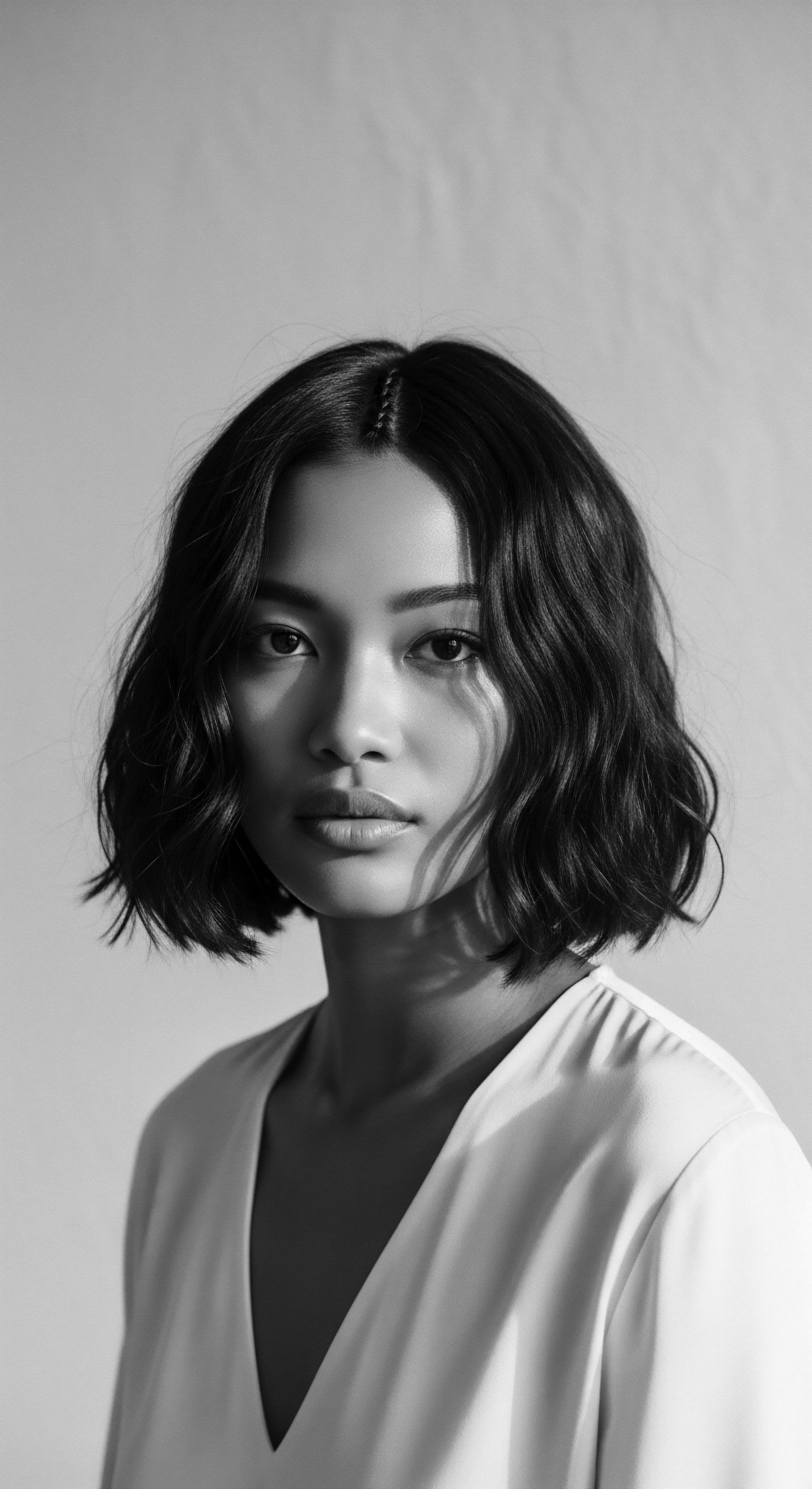
Beyond Categorization Schemes
For centuries, attempts were made to categorize human hair types, often through a Eurocentric lens that placed straighter hair at the top of a perceived hierarchy. During slavery, this classification became a tool of subjugation. Enslaved people with lighter skin and hair that mimicked European textures sometimes received comparatively less brutal treatment, or were assigned roles within the plantation household rather than the grueling fields. This created an insidious internal division, where the natural variations within African hair types were exploited to reinforce colonial power structures.
The very term “good hair” emerged from this period, deeply scarred by the trauma of racialized beauty standards. However, pre-colonial African societies had their own nuanced systems for describing and valuing hair, ones that celebrated its diversity and symbolic richness, not its proximity to a European ideal.
- Kinky Coiled Hair ❉ Often referring to tightly wound, small coils, a dominant hair type among many West African groups.
- Loosely Curled Hair ❉ Describing broader, softer curls, found in various African lineages, demonstrating the spectrum of textured hair.
- Threaded Styles ❉ A method where hair is wrapped tightly with thread, often for elongation or protection, seen in various ancestral practices.

The Language of Lineage
Every strand of textured hair carries the echoes of a deep past, a lineage spoken in styles and care practices. Before colonization, the language used to describe hair across African cultures was rich with meaning, reflecting communal values and individual journeys. Specific patterns or adornments could denote marital status, age, spiritual devotion, or even the clan to which an individual belonged. These terms, often lost or obscured by forced assimilation, speak to a complex, sophisticated understanding of hair as a profound marker of personhood.
The very tools and ingredients used were steeped in this communal wisdom. Natural oils extracted from local flora, rich butters, and specialized combs crafted from wood or bone were not merely functional items; they were extensions of a reverence for the hair itself. The collective grooming sessions, particularly among women, served as vital spaces for social connection, storytelling, and the transmission of ancestral knowledge across generations, preserving the very language and understanding of textured hair within the collective memory.

Ritual
The ritual of textured hair care, passed through generations, holds a profound space in the continuum of Black and mixed-race heritage. During slavery, these acts moved from open celebration to clandestine gatherings, becoming secret ceremonies of cultural survival. The hands that braided, twisted, and styled were not merely arranging strands; they were preserving a legacy, crafting identity, and transmitting coded messages of hope and resistance. This section explores how these essential practices, from styling techniques to tools, adapted and persisted, becoming powerful affirmations of selfhood in a world determined to erase it.

Sanctuaries of Style Protective Styling’s Ancestral Roots
Protective styling, a cornerstone of textured hair care today, stands as a direct descendant of ancestral wisdom. These styles, designed to guard delicate ends and reduce manipulation, were not just practical; they were symbols of communal artistry and cultural continuity. In pre-colonial Africa, elaborate braids, twists, and locs marked rites of passage, communicated social standing, or served as spiritual conduits. During slavery, these styles took on urgent new meanings.
They offered practicality in demanding labor conditions, keeping hair neat and away from the face, but they also became covert acts of preservation. Hiding seeds for future sustenance within braids, as some historical accounts recount, transformed hair into a vessel of survival, linking the present struggle to the promise of a future harvest.
One striking example of protective styling’s deep roots and its continued relevance is found in the widespread use of cornrows. This ancient technique, known as ‘Irun Didi’ in Yoruba, among other names, dates back thousands of years, with depictions found in Saharan rock paintings from 3500 BCE. Its precise, geometric patterns provided a foundation for intricate designs that could endure for days, even weeks, reducing the need for constant manipulation. This longevity was particularly valuable for enslaved people, who had little time or resources for personal grooming.
Hair styles during enslavement were intricate acts of self-preservation and communal solidarity.

Defining Identity Natural Styling and Expression
Even under the oppressive gaze of enslavers, the drive to express identity through hair found ways to surface. While many enslaved individuals were forced to shave their heads as a means of dehumanization, or cover their hair with rough fabrics, moments of autonomy, however brief, allowed for the reassertion of ancestral beauty. Simple twists, coils, and natural afros, though often deemed “unruly” by European standards, became quiet statements of self-possession.
These styles, often created during precious moments of rest, perhaps on Sundays, linked individuals to a shared past, reminding them of who they were before the chains. The communal act of styling hair became a space for storytelling, for sharing memories of a homeland, and for reinforcing a collective identity that transcended the brutal realities of their existence.
The choice of a particular pattern or the careful maintenance of one’s natural texture, even in the most restricted environments, was a silent, powerful affirmation. This persistence in self-expression, however subtle, laid the groundwork for future generations’ reclamation of natural hair as a symbol of pride and resistance against imposed beauty norms.

Echoes of Adornment Historical and Cultural Extensions
The practice of using wigs and hair extensions also carries a complex historical weight, resonating differently across diverse cultures. In ancient Africa, adornments for hair, including extensions crafted from plant fibers or other human hair, were used to signify status, beauty, and wealth. During slavery, the stark reality was often one of deprivation. However, some enslaved women, particularly those forced to labor in plantation households, might have been compelled to wear wigs or straighten their hair to emulate the styles of their enslavers, a cruel irony that demanded mimicry even as it denied true selfhood.
| Era Function |
| Traditional African Societies Symbol of identity, status, spirituality, community bond, aesthetic expression. |
| Slavery Era Tool of dehumanization (shaving), a site of clandestine resistance, hidden communication, personal dignity. |
| Era Adornment & Extensions |
| Traditional African Societies Utilized for beauty, ritual, and social markers; materials often natural fibers or human hair. |
| Slavery Era Rarely allowed for self-expression; forced mimicry of European styles, or used to conceal items for survival. |
| Era Understanding hair's transformation through these periods sheds light on its profound cultural and historical significance. |

Heat, History, and Hands Traditional Methods
The relationship between textured hair and heat application has a history deeply intertwined with both ancestral practices and the pressures of assimilation. While contemporary heat styling often involves tools unknown to past generations, traditional African methods might have used gentle warmth for specific purposes, such as stretching hair or aiding in the application of natural ingredients. Yet, the advent of chemical straighteners and the hot comb in later periods arose directly from the desire to conform to Eurocentric beauty standards that privileged straight hair.
This historical context highlights a tension ❉ practices designed for health and aesthetic preference versus those born from societal oppression. A thoughtful approach to hair care today recognizes these historical threads, prioritizing hair health and cultural respect over adherence to damaging external ideals.
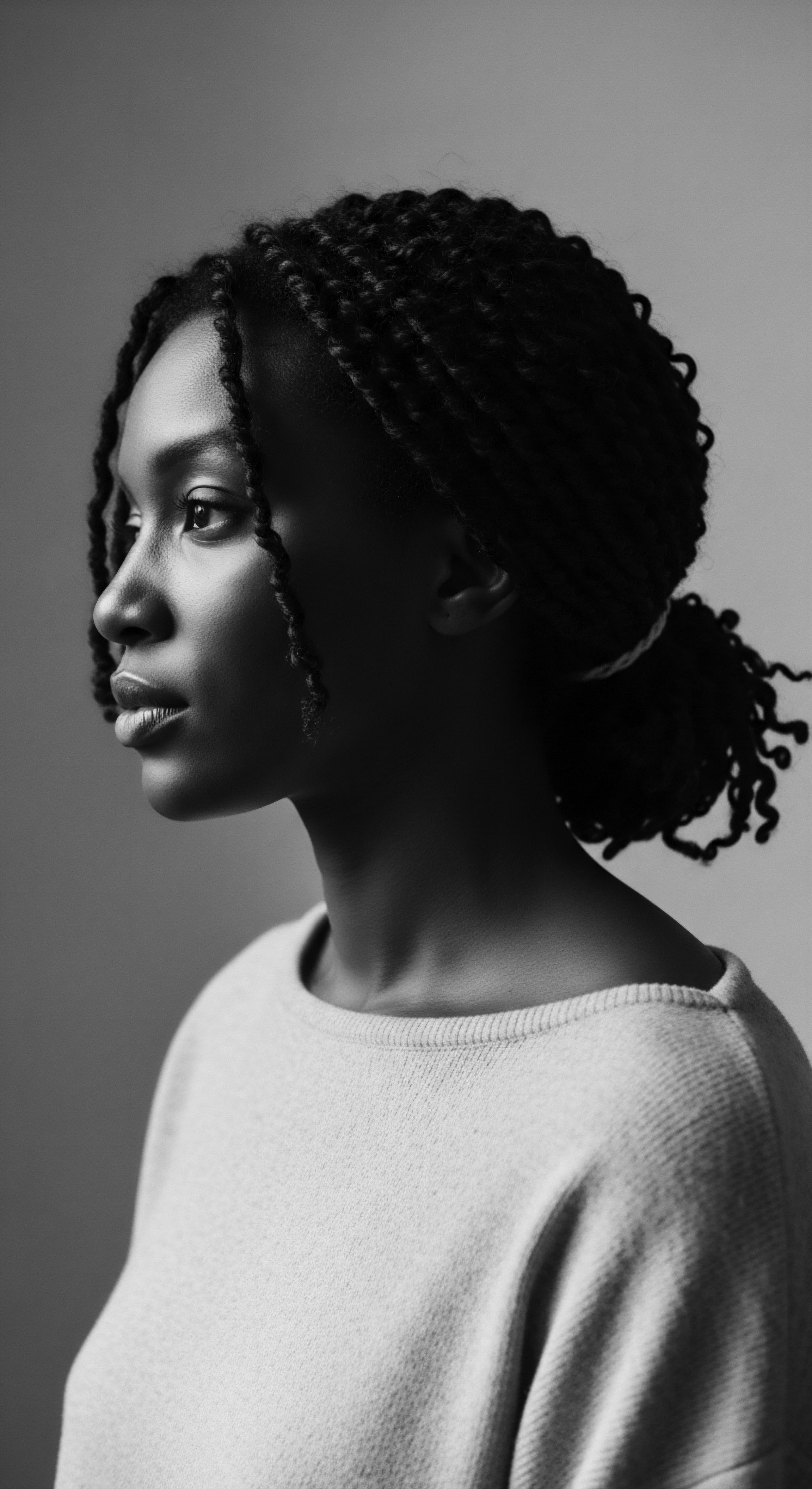
Tools of Tradition and Survival
The implements used in textured hair care tell their own story, from the hands that braided to the combs that untangled. In African societies, combs were often carved with symbolic motifs, becoming objects of art and cultural significance. Natural materials like gourds and shells might have been used for washing or conditioning. During slavery, access to proper tools was often nonexistent.
Enslaved people improvised, using whatever was at hand – perhaps a rough piece of wood smoothed into a comb, or the collective fingers of family and community members. These improvised tools, coupled with the enduring skills, became emblems of resilience, proving that even stripped of resources, the spirit of hair care persisted.
The continuity of these practices, however adapted, speaks volumes. It underscores the profound human need for self-adornment, for connection to heritage, and for the quiet defiance found in maintaining one’s appearance, even when facing relentless attempts at erasure.
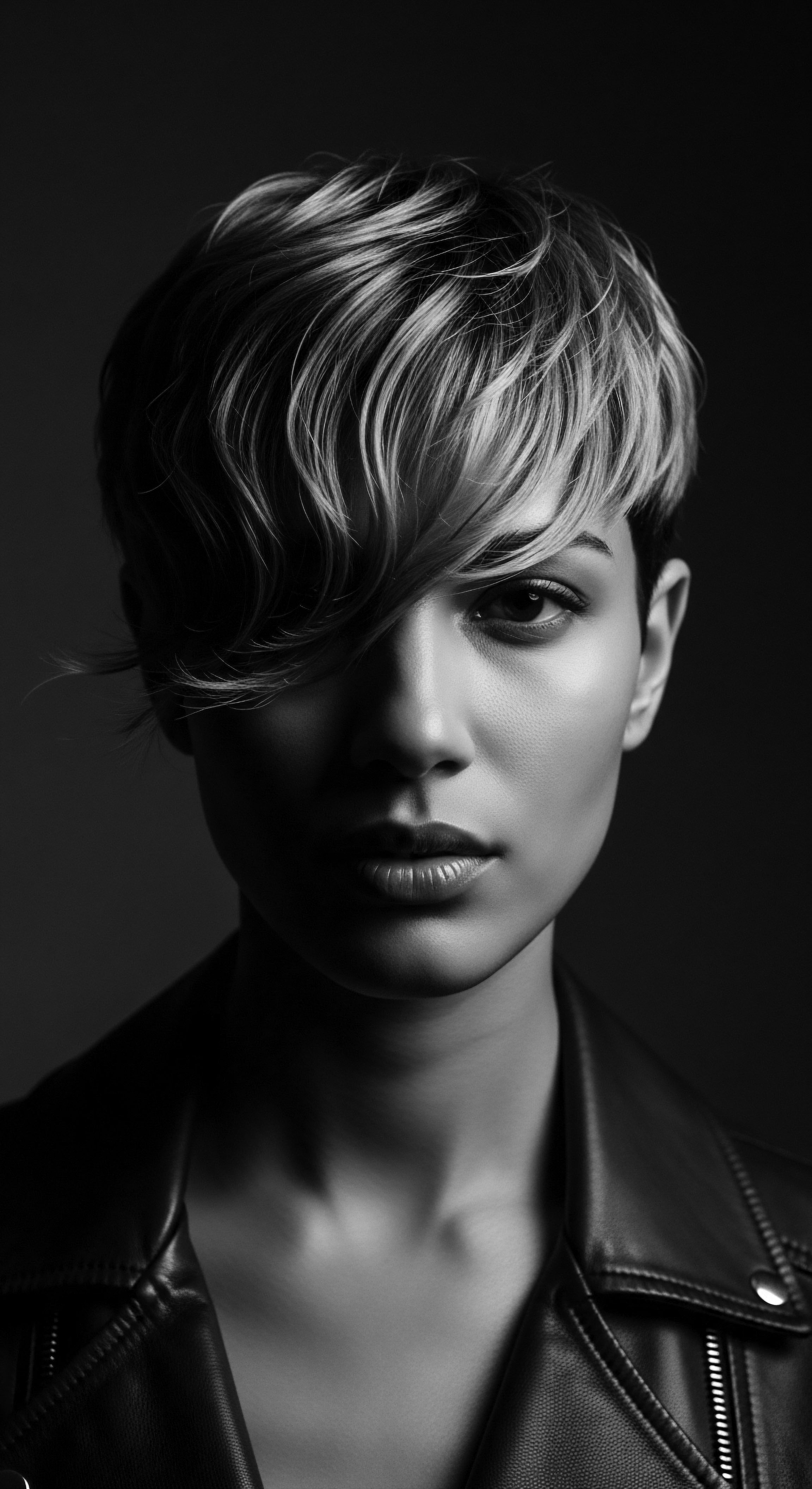
Relay
The silent dialogues carried within textured hair during slavery represent a remarkable testament to human ingenuity and the profound spirit of resistance. In a system designed to strip every semblance of personhood, hair became an intimate canvas for covert communication, a sacred site for spiritual connection, and a living record of collective defiance. These hidden messages, layered beneath the visible styles, formed a complex semiotics understood by those who shared the ancestral lineage, bypassed the vigilance of enslavers, and contributed to the very survival of cultural identity. This exploration transcends superficial appearance, seeking the deeper currents of knowledge and rebellion that flowed through each coil and braid.

Coded Expressions Hair as a Literal Map
One of the most powerful and widely recounted hidden messages embedded within textured hair during slavery involved the use of hairstyles as literal maps. Historical accounts suggest that specific braiding patterns, particularly cornrows, were employed to depict escape routes. The lines and curves of the braids could represent roads, rivers, or topographical features, guiding those seeking freedom toward safe havens or points along the Underground Railroad. This practice was particularly notable in parts of South America, such as Colombia, where enslaved Africans, led by figures like Benkos Biohó, reportedly used coded hairstyles to aid in the escape of others and to establish free communities.
This sophisticated system of communication allowed for the transmission of vital information under the very noses of the oppressors, transforming something as seemingly benign as a hairstyle into a strategic instrument of liberation. Furthermore, small objects, such as seeds or gold fragments, could be concealed within the tight braids, providing sustenance or resources for the journey ahead. This ingenuity speaks to a profound understanding of hair’s capacity to hold secrets, its tight, dense structure providing the ideal camouflage for these life-sustaining parcels.

Acts of Defiance Resistance and Rebellion
Beyond acting as navigational tools, textured hairstyles also served as potent symbols of overt and covert resistance. The very act of maintaining traditional African hair practices in the face of forced assimilation was a defiant statement against the dehumanizing agenda of slavery. The widespread practice of shaving the heads of newly enslaved people was a deliberate attempt to strip them of their identity and cultural connection. Yet, the determination to retain or recreate these styles, even when met with punishment, demonstrated an unbreakable spirit.
For instance, the Louisiana Tignon Laws of 1786, enacted by Spanish officials, forced free women of color to cover their hair with tignons or kerchiefs in public, attempting to diminish their perceived social status, which was often expressed through elaborate hairstyles. This law inadvertently sparked a different kind of resistance ❉ these women responded by tying their headwraps with such artistry and extravagance that the tignon itself became a symbol of defiance and refined beauty, turning an instrument of oppression into a statement of cultural pride.
- Cornrow Maps ❉ Braiding patterns depicting physical escape routes, rivers, or safe houses.
- Concealed Items ❉ Hiding seeds for planting, gold, or small tools within braids for survival during escape.
- Symbolic Adornment ❉ Use of specific headwraps or styled hair to signify status or resistance against oppressive laws.
- Shaved Heads as Protest ❉ Some individuals, when escaping, shaved their heads to symbolize shedding the mark of slavery and reclaiming agency.
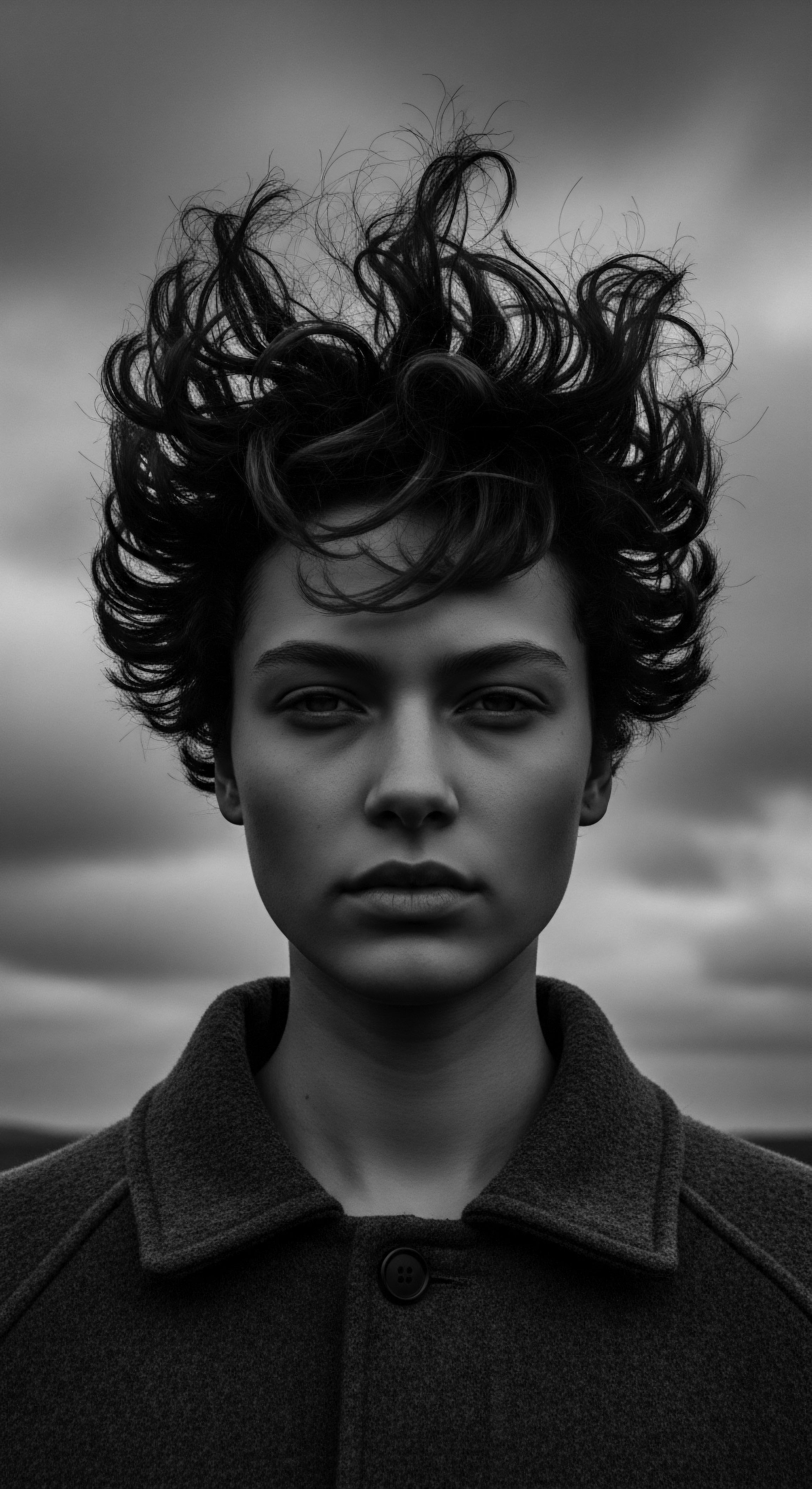
Spiritual Silhouettes Hair as a Sacred Conduit
In many West and Central African societies, hair held deep spiritual meaning, often regarded as the most elevated part of the body, a conduit connecting the individual to the divine, to ancestors, and to cosmic energies. The act of hair styling was thus a sacred ritual, a time for prayer, meditation, and the transmission of ancestral wisdom. During slavery, despite the forced suppression of African spiritual practices, this inherent reverence for hair persisted. Even when open worship was forbidden, the belief in hair as a connection to the spirit world remained.
The communal practice of hair care, often carried out in secret, became a form of spiritual communion, a quiet reaffirmation of faith and heritage. The very act of cleansing, oiling, and styling hair, especially on Sundays – the only day of rest for many – took on added spiritual significance, transforming a mundane task into a sacred ritual that honored ancestral traditions and provided solace. This continuity of spiritual understanding, despite immense duress, highlights the enduring power of cultural beliefs.

The Weight of Wisdom Hair and Social Standing
Before enslavement, hair served as a visual lexicon of an individual’s place within society. Styles could denote age, marital status, wealth, power, and religious affiliation. Leaders often wore the most ornate and complex styles. The forced removal of these markers during slavery, often through brutal shaving, was a deliberate act of dehumanization, stripping individuals of their social context and reducing them to chattel.
Yet, within the enslaved communities, a subtle re-establishment of these visual cues occurred. Even simple variations in hair appearance, when allowed, could signal subtle differentiations within the community, perhaps denoting experience, resilience, or a quiet leadership.
The ability to maintain a neat appearance, however challenging, could also reflect an individual’s resourcefulness or the support network within the enslaved community. While enslavers sought to divide and conquer, the shared understanding of hair as a marker of dignity, however subdued, fostered bonds and a quiet collective wisdom. This enduring connection to hair as a conveyor of status, even in its most reduced form, speaks to the resilience of cultural memory.
The historian Emma Dabiri, in her examination of Black hair culture, notes how hair texture itself became a significant marker during slavery, sometimes even more so than skin color, in determining perceived status and treatment within the oppressive system. Patterson argues that during slavery it was hair texture more than skin color that distinguished Africans specifically as degenerate. Enslaved individuals with hair textures perceived as “closer” to European standards were often subjected to comparatively less harsh labor, frequently relegated to domestic duties rather than the backbreaking work in the fields. Conversely, those with tightly coiled hair were often deemed more “savage” and fit for manual labor.
This created an insidious internal hierarchy, designed to sow discord among the enslaved and reinforce the false ideology of racial superiority. This institutionalized discrimination, based on the very fiber of one’s being, profoundly shaped the experiences of individuals and communities, casting long shadows that extend into contemporary perceptions of beauty and status within the diaspora.
This historical reality underscores the deeply ingrained nature of hair discrimination, revealing how even physical traits beyond skin tone were weaponized to perpetuate systemic oppression.
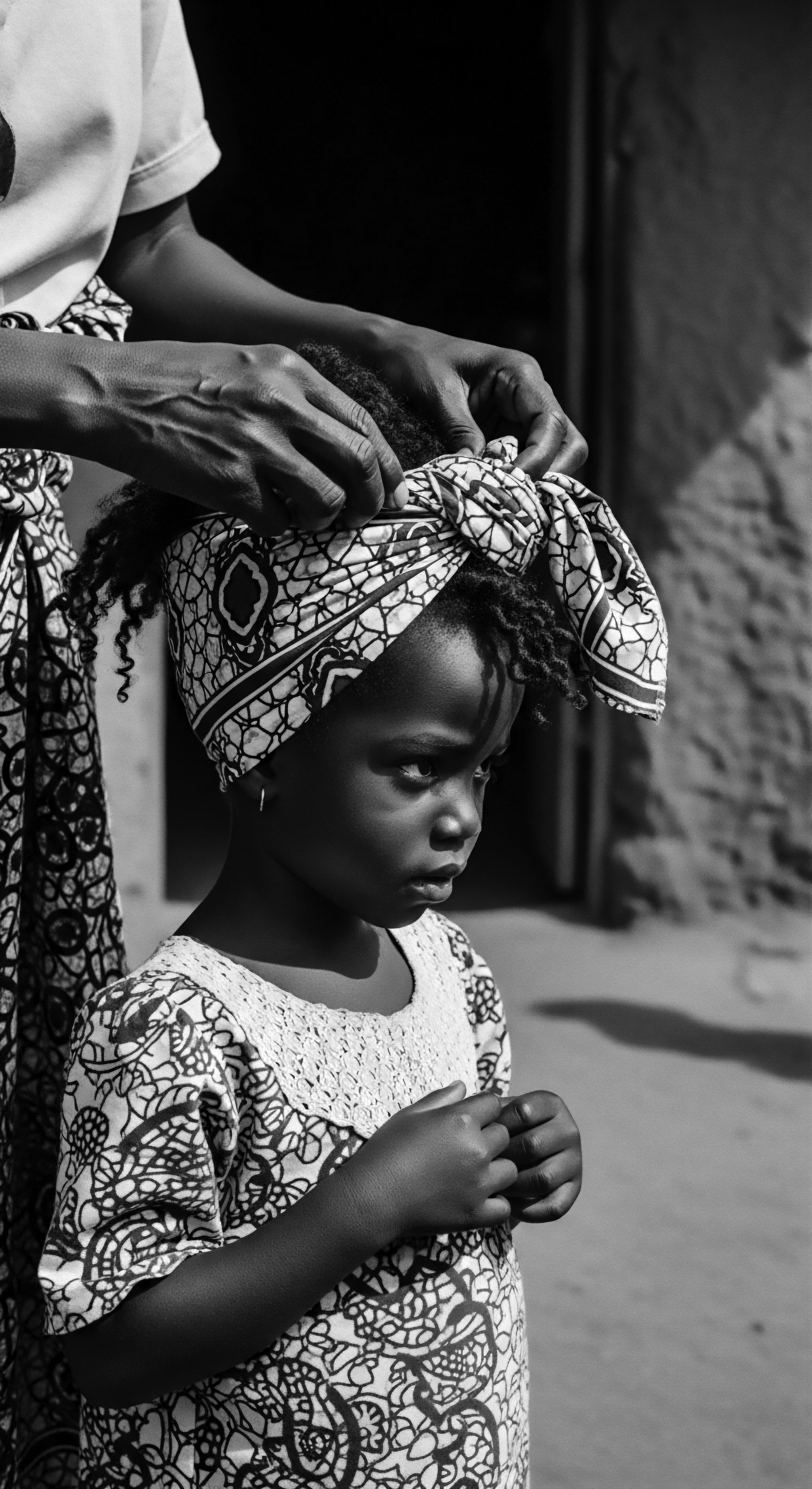
Reflection
The journey through the hidden messages of textured hair during slavery carries us to the enduring heart of Roothea’s ethos ❉ the profound connection between hair, heritage, and the soul. What surfaced from those shadowed times was not merely survival, but a vibrant testament to the human spirit’s capacity for resistance and preservation. Each braid, each coil, each strand, carefully tended or defiantly displayed, was a syllable in a silent language, a whispered prayer, a secret map, a reaffirmation of a self the world sought to deny. This historical dialogue reminds us that textured hair is far more than protein filaments; it is a living archive, a repository of ancestral memory, and a continuous thread linking past struggles to present triumphs.
To understand this legacy is to grasp the profound resilience inherent in Black and mixed-race communities. The acts of care, however constrained, were acts of love and remembrance, rituals that honored the past and invested in a future where selfhood could openly flourish. Roothea believes in tending to this living archive, recognizing that the health of our strands is inextricably tied to the health of our collective memory. Our hair tells stories of migration, adaptation, and unwavering spirit.
As we engage with our textured hair today, whether through meticulous care or bold expression, we participate in a continuous conversation with our ancestors, honoring their struggle and their ingenuity. This is the ‘Soul of a Strand’ – the recognition that within every curl lies a universe of heritage, a wisdom waiting to be heard, guiding us toward a future where our hair, in all its varied glory, is celebrated as a crown of freedom.

References
- Byrd, Ayana D. and Lori L. Tharps. Hair Story ❉ Untangling the Roots of Black Hair in America. St. Martin’s Griffin, 2001.
- Dabiri, Emma. Twisted ❉ The Tangled History of Black Hair Culture. Harper Perennial, 2020.
- Jacobs-Huey, Lanita. From the Kitchen to the Parlor ❉ Language and Becoming in African American Women’s Hair Care. Oxford University Press, 2006.
- Patton, Tracy Owens. “African American Hair and Beauty ❉ Examining Afrocentricity and Identity Through the Reemergence and Expression of Natural Hair.” Scholar Commons, University of South Florida, 2006.
- White, Shane, and Graham White. “Slave Hair and African American Culture in the Eighteenth and Nineteenth Centuries.” The Journal of Southern History, vol. 61, no. 1, 1995, pp. 45–76.
- Nabugodi, Mathelinda. “Afro Hair in the Time of Slavery.” Studies in Romanticism, vol. 61, no. 4, 2022, pp. 583-608.
- Johnson, T. A. and T. Bankhead. “Hair it is ❉ Examining the Experiences of Black Women with Natural Hair.” Open Journal of Social Sciences, vol. 2, 2014, pp. 86-100.
- Block, Sharon. Beyond Vanity ❉ The History and Power of Hairdressing. University of Illinois Press, 2020.
- Tobin, Jacqueline, and Robert Dobard. Hidden in Plain View ❉ A Secret Story of Quilts and the Underground Railroad. Doubleday, 1999.
